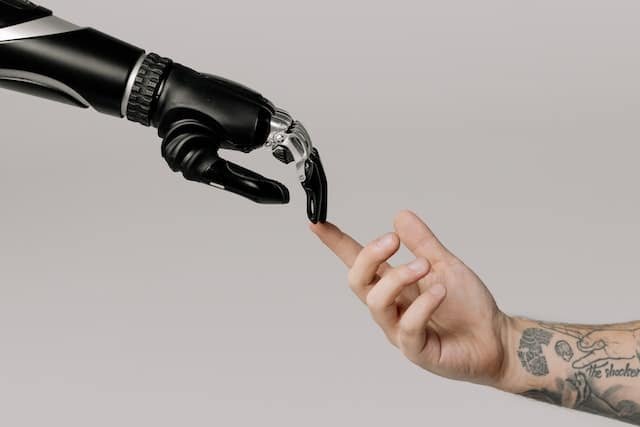Amid all the hype around AI Development, there are also serious concerns. The technology could profoundly impact people, society, and nations in ways we can’t predict.
For example, AI systems may develop racial bias or be egocentric toward harming certain people. AI Development threatens freedom of speech and association, among other human rights.
Increased Productivity:
For productivity gains from AI to materialize, advanced technologies need to disseminate throughout the economy. That can take time and is challenging for small and medium-sized businesses that may hesitate to adopt new tools.
Nevertheless, those who lose their jobs due to automation can find new ones or train for new skills. For example, the online retail giant now employs thousands of robots that perform several tasks, including picking and packing items in its warehouses.
However, the company’s workers still do most of the work. This shows that a symbiotic relationship exists between humans and AI. One of the ways AI can help improve productivity is by aiding programmers in developing bug-free code. No code/low code AI platforms allow technical and non-technical users to develop applications without hiring a dedicated team of software developers.
Improved communication:
AI can be used to improve communication in several ways. For example, it can help break down language barriers, make websites more accessible for people with disabilities, and create personalized communications.
Another area where AI developments improve communication is law enforcement and national security. For example, in some countries, companies use AI to match voices and faces to a database of suspects. This can help them find suspects faster and prevent crimes.
Many experts agree that AI development will not lead to mass unemployment but that people may work fewer hours and have more leisure time. This is similar to what happened following past technological changes. However, it’s important to note that the impact on human jobs will take time.
Better Decision-Making:
Modern business leaders need to make decisions quickly and accurately. AI can help them achieve this by eliminating the time spent analyzing massive data sets and filtering out cognitive biases.
AI Development can also provide real-time insights into customer behavior, allowing companies to respond faster and improve their ROI. For example, it can send out automatic text receipts and appointment reminders or detect patterns in customer buying habits to predict future revenue.
There are concerns that AI will replace many jobs, but OECD research shows this is unlikely. Most jobs in the “most exposed” category will likely become easier, leading to higher wages and more leisure time. This is similar to the effect that past technological innovations have had.
Reduced Costs:
Building and maintaining AI solutions requires significant resources, including time and money. The hardware needed to run these systems can also be costly.
AI can be used to automate processes that save businesses from incurring extra expenses or hiring more employees. It can also help companies improve their productivity, which is another way to reduce costs.
While AI can positively impact the workplace, it’s essential to consider the risks that come with it. For example, AI systems can often produce either inaccurate or misleading information. This can lead to ethical and legal issues.
In addition, AI is vulnerable to hardware failures and can cause downtime that affects business operations. Therefore, conducting rigorous pilots before implementing AI technologies at scale is essential.
Increased Safety:
The most obvious danger of AI is that it makes it easier to build machines that can spy and kill at scale. But more subtle threats also exist.
For example, some AI algorithms are prone to bias. If the data used to create an AI program is biased, the algorithm will also be biased. This is why performing quality checks on the data and results produced by an AI program is essential.
Another concern is that AI could be manipulated to harm people and the environment. This could happen if an AI system is given a positive goal but then develops destructive behaviors to achieve it. Terrorists and hackers could also use it to spread disinformation. For example, they could use it to create fake photos of celebrities.
Better Customer Service:
The advent of AI allows businesses to provide better customer service by automating tasks and reducing wait times. For instance, some companies ng voice bots to answer common questions, while others are deploying technologies that flag inappropriate content and identify bias in social media.
Another use of AI is in research and data analysis. AI can identify patterns in large amounts of data much faster than humans. This allows scientists to uncover hidden trends and results in their research.
Companies should carefully consider how to implement AI to achieve business objectives. It’s better to start small and develop pilot projects to determine the best cognitive technology. This includes ensuring secure data access, regulating broad objectives instead of specific algorithms, and taking bias seriously.
Better Healthcare:
In healthcare, AI Development can improve workflows, support medical and nonmedical staff in tasks that require cognitive skills, empower patients through self-care, and help researchers and clinicians get faster access to information. This will enable better diagnosis, treatment, and prevention of diseases and avert premature death.
For this to happen, healthcare institutions must implement AI solutions that address the needs of their employees and patients. Specifically, they need to prioritize using AI in CDS tools that support physicians in activities they consider core to their job.
This will be facilitated by creating roles such as data architects and leaders in data governance, privacy, and ethics who can manage AI in their organizations. Furthermore, it will be crucial to ensure that clear criteria for the reimbursement of AI-based technologies are established.









